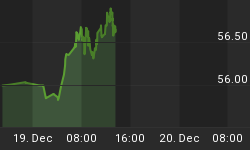There are three primary reasons why the US is suffering from structurally high unemployment: a pervasively irresponsible monetary policy, the continued attenuation of our manufacturing base, and an overleveraged consumer who must now reconcile his balance sheet. In reality, the latter two conditions are a direct result of the first. They are the result of a government that seeks to micromanage the cost of money and the rate of economic growth.
When the Fed prints money and monetizes debt in order to drag interest rates down, it necessarily encourages excess consumption. The boom in lending and spending results in rising prices, which misallocate what little genuine savings and investment remain. Since inflation is never evenly distributed throughout an economy, it usually gets concentrated into a particular asset bubble (whether NASDAQ stocks, real estate, or tulips).
If interest rates and the money supply are left to market forces (i.e. interest rates are a function of savings vs. the demand for money and money supply is restricted by the mine supply of precious metals), then resources tend to be allocated in the most efficient manner. However, when the Fed distorts these forces, employment gains are most prevalent in the building and servicing of the asset bubbles they help create. This means labor capital is not deployed evenly throughout the economy. It is concentrated on flipping stocks or houses, instead of expanding productivity or strengthening the economy's manufacturing base. But these behaviors are unsustainable. Once the bubble is popped, the economy must go through a period of deleveraging before labor can be reallocated in a way that makes economic sense.
As an illustration of this point, from January 2000 thru today, the US has lost over 6.6 million goods-producing jobs! Some make the excuse that higher productivity means less workers are needed to produce the same amount of goods. If that were true, then manufacturing would not have declined from 14.2% to 11% of GDP over the same period. Meanwhile, jobs in the housing and service sectors were doing much better. From January 2000 through June 2006, the economy added 261,000 jobs in real estate alone. And from 2000 through today, the service sector as a whole added over 5 million jobs.
Some will claim that the prescription for boosting manufacturing output and employment is to destroy the dollar at an even greater pace. But the answer can't be found by simply forcing the Chinese to float their currency or by devaluing the US dollar further. History clearly shows the currency manipulation strategy to be a complete failure. The most important factors in balancing trade are wages, taxes, and regulations within a country. A current account deficit cannot be balanced by lowering the value of a currency.
Another consequence of government's desire to manage interest rates and the economy is the accumulation of debt. Household debt in the year 2000 totaled $6.9 trillion, which represented 66% of GDP. Then government slammed on the monetary and fiscal accelerator in order to paper over the collapse of the equity market. Consumer debt skyrocketed as a consequence. Today, household debt stands at $13.5 trillion - over 93% of GDP. Job growth will be weak because the consumer must pay down this debt and will thus not be taking the risks associated with employment creation. Demand will also be weak because consumers are (responsibly) repairing their balance sheets instead of taking out loans to expand or start new businesses.
The bottom line is that it will take time for those erstwhile service-sector employees and others whose employment was associated with the previous bubble to become gainfully employed in the rebuilding of our country's manufacturing base. It will also take many years for the private sector to deleverage and be able to once again expand its balance sheet.
Unfortunately, our government is not currently headed down the path to a sustainable recovery. They are trying to re-inflate the bubble instead of allowing the market to self-correct. Because of these efforts, they are piling on an intractable amount of public-sector debt - which future taxpayers will be forced to service in vain. The near-term result will be an economy marred by slow growth and underemployment. As for the long-term, the sooner our government stops piling on debt and devaluing its dollar, the quicker we can start to heal.
For in-depth analysis of this and other investment topics, subscribe to The Global Investor, Peter Schiff's free newsletter. Click here for more information.
New Special Report Available: Peter Schiff's Five Favorite Gold & Silver Mining Stocks: Click here to download.
Click here for a description of Peter Schiff's just-released economic fable, How an Economy Grows and Why It Crashes.
Please note: Opinions expressed are those of the writer.















